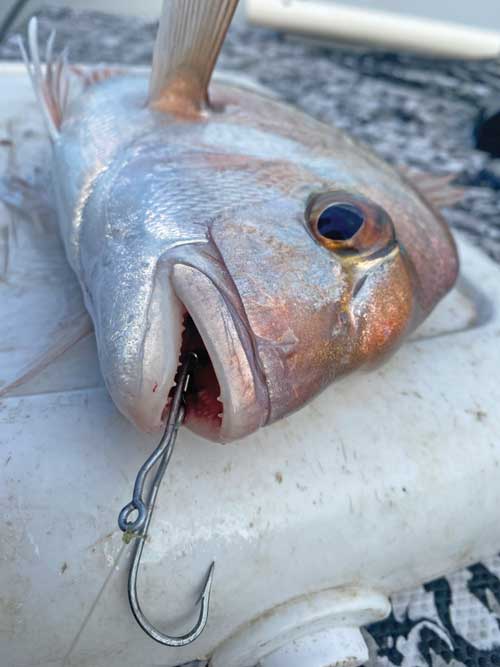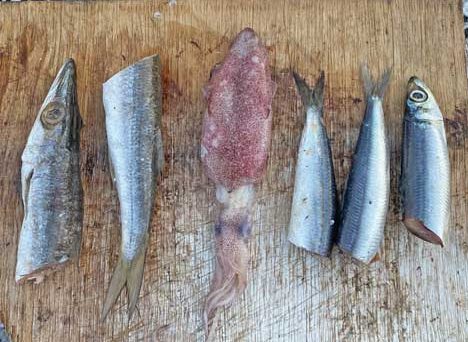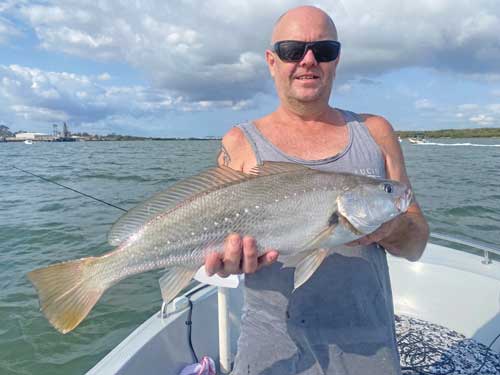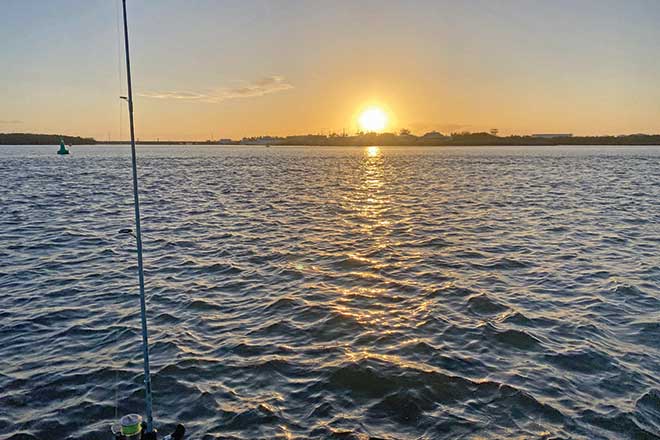Continuing on with last month’s tips for targeting snapper in the Brisbane River, time of day isn’t as important as fishing the right tide.
I’ve caught plenty of good fish in the middle of the day.
If you coincide a good stage of the tide with an early morning or late afternoon, you’re giving yourself a good chance of hooking up to a quality snapper.
Wind direction is another factor that doesn’t seem to affect the feeding habits of snapper in the river.
Take into consideration that the Brisbane River can get very rough when there’s a decent wind blowing up the river and against the tide.
A big run-out tide with a 20-minutes northerly makes things very uncomfortable.
I recently fished it in these conditions and the electric motor spent more time out of the water than in it.
We still managed a couple of snapper but it wasn’t very relaxing.

In the Brisbane River, from the mouth to the Sir Leo Hielscher Bridges (formerly known as the Gateway Bridge), there aren’t many places to hide from a stiff northerly or southerly wind, though I prefer to target in this area.
I’m sure at times snapper travel further upriver than this particular spot, yet I find the better numbers here.
The rock wall at the entrance of the river is a good place to start and is quite easy to fish.
A lot of smaller fish are inside along the wall, however if the weather is favourable, there are some very good fish out the front.
Also, there are plenty of underwater structures to target on the way up to the bridges.
Alternatively, I’ve found big schools of snapper sitting underneath bait and prawn schools with no structure in sight, so if you find the bait, it’s worth a few casts.

The Sir Leo Hielscher Bridges have a lot of structure underneath them.
I’ve jigged up snapper and jewfish from here when the tide started to slow down.
The current roars through the bridges on bigger tides, so it’s best fished closer to the tide change.
Bait fishing is an excellent way to find yourself hooked up to a quality Brisbane River snapper.
Depending on who I have onboard my boat, I prepare to target them with lures and bait.
It’s a very productive way to land multiple fish without too much effort.
Once you have the right gear and know where the fish prefer to feed, it can be fairly predictable.
I fish the same areas with bait as when fishing with lures.
Structure and bait are key, and if you can find both, you’re in with a good chance of hooking snapper.
I keep leaders as light as possible when bait fishing.
All that’s needed in areas with less structure is 12-14lb, but having 20lb is good insurance near rocky terrain.
I use ganged Tru Turn hooks – they’re expensive, though when a decent fish takes the bait, these hooks don’t miss or come out of the fish during the fight.

The two-hook 3/0 and 4/0 are perfect for most of the bait I use.
Quality fresh bait will out fish a packet of service station mullet every time.
My favourite bait is good old pilchard – they tend to attract more fish than all other bait.
Yet, squid and cuttlefish work well too, with whole whiting, mantis shrimp and prawns also good bait to try.
Pilchard act as a berley trail when the fish eat them and when smaller fish turn up to pick at them.
For me, the stronger stages of a tide are more productive when chasing snapper on bait.
The smaller fish stay out of the current, however snapper still feed.
You won’t get as many bites, though when you do it’s normally a decent fish.
When the tide slows, other species such as bream, moses perch and other smaller fish come out to play.
And eels, catfish, sharks and other vermin also turn up when the tide slows down.
This is when I switch to lure fishing again.
Good by-catch also turn up when fishing bait.
Jewfish, king threadfin salmon, grunter, tailor, cod and others that will regularly eat a well-presented bait.
Bait fishing isn’t for everyone, but it gets the fish in the boat and can turn a quiet day into a good session.
Having both options onboard gives you every chance of hooking up to a Brisbane River snapper.
Hope to see you on the water.
 Bush ‘n Beach Fishing Magazine Location reports & tips for fishing, boating, camping, kayaking, 4WDing in Queensland and Northern NSW
Bush ‘n Beach Fishing Magazine Location reports & tips for fishing, boating, camping, kayaking, 4WDing in Queensland and Northern NSW









